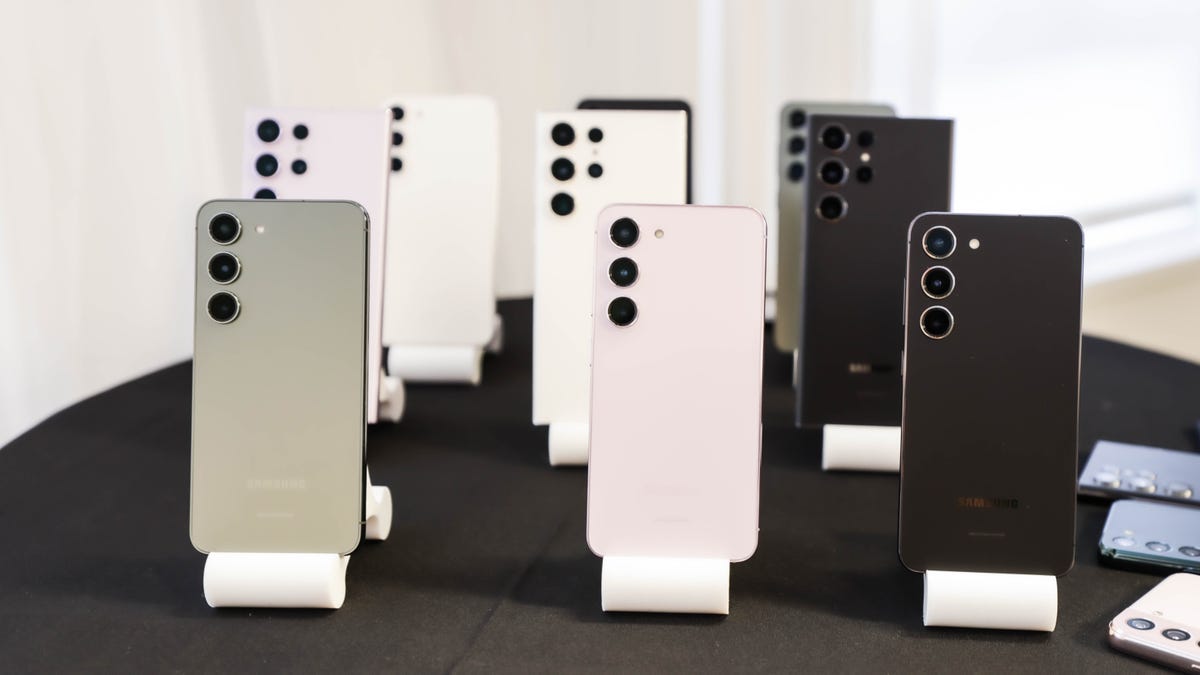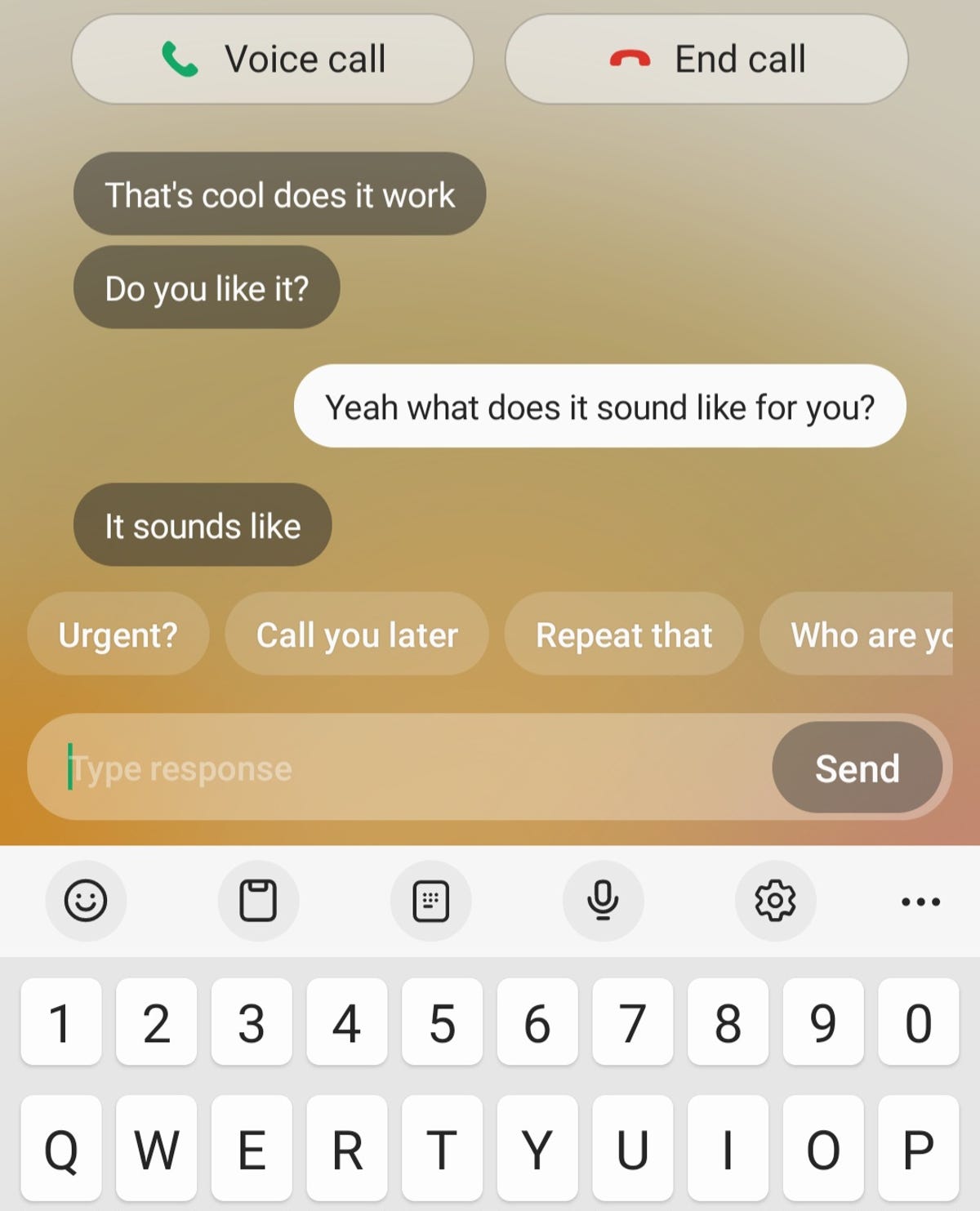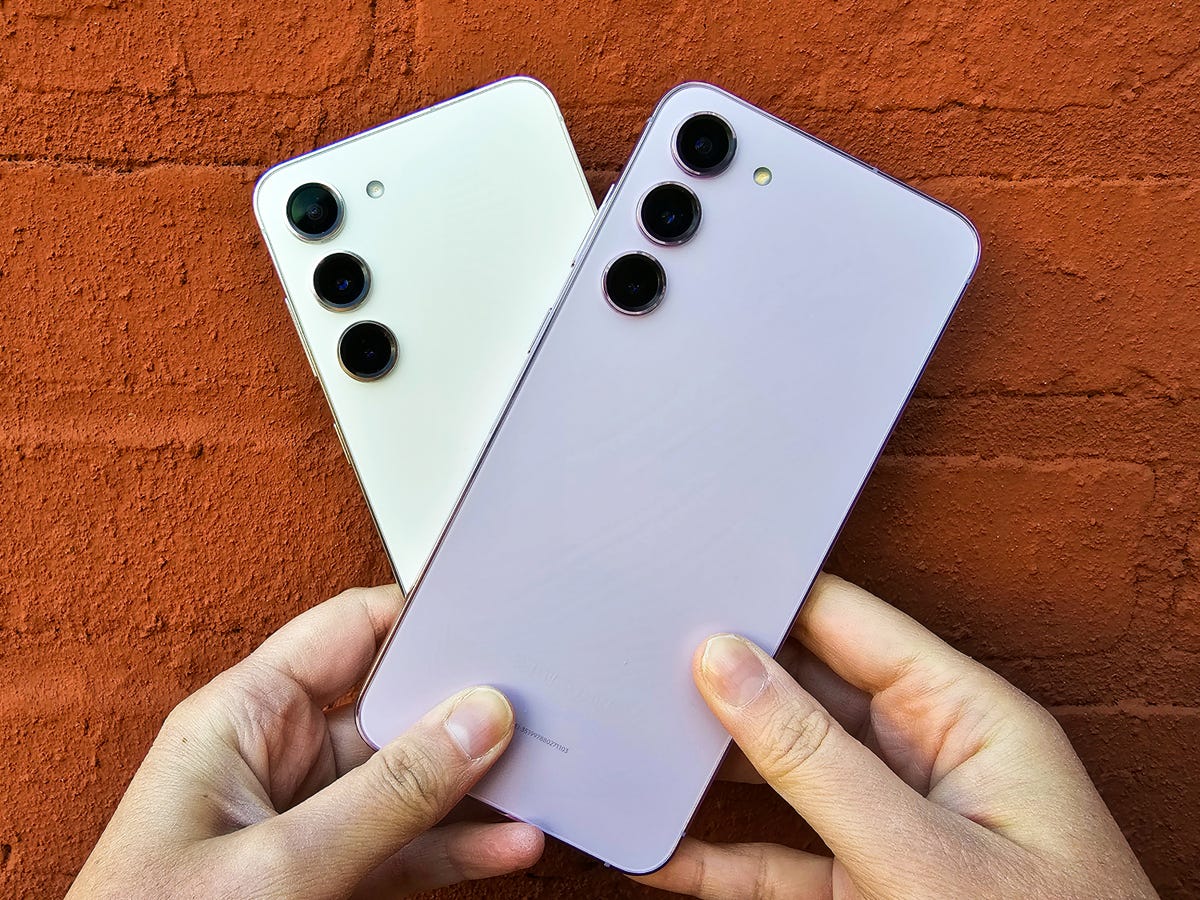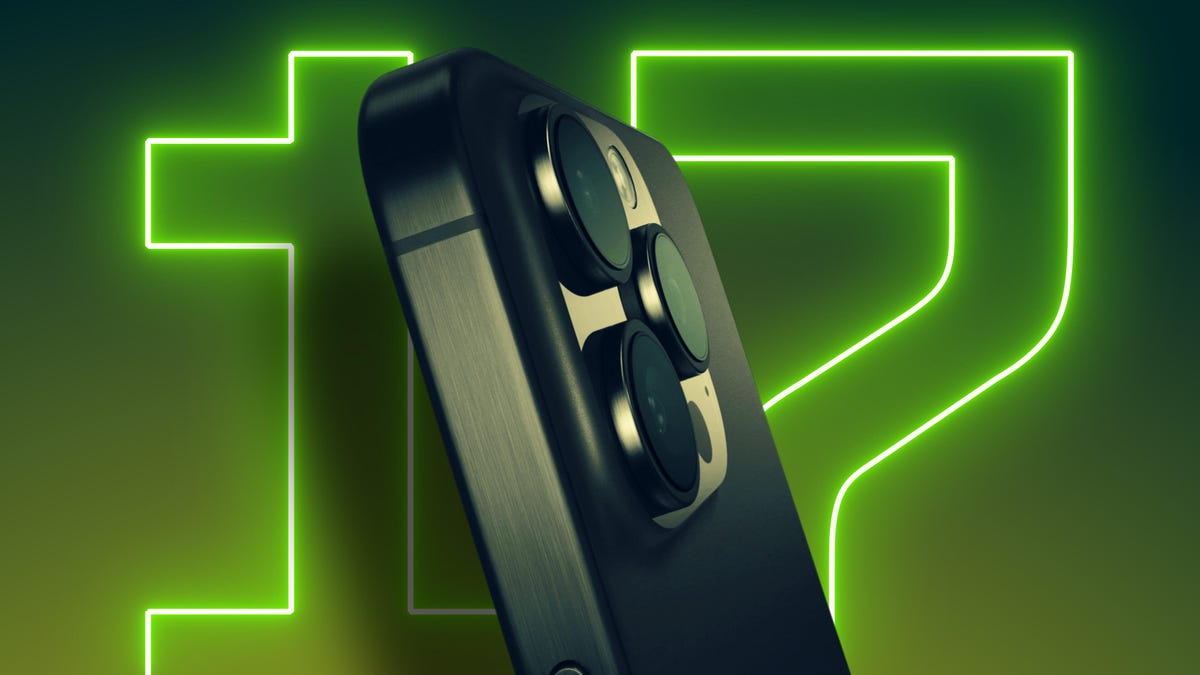Technologies
Samsung’s Voice Assistant Answered My Calls. It Was Weird
Samsung’s Bixby Text Call feature has potential, but it can also cause confusion.

My sister calls me almost every day — often at inopportune times, like when I’m in a meeting or out at dinner with friends. That’s why I was intrigued to learn about Samsung’s Bixby Text Call, a feature that lets you blend traditional phone calls with texting. Instead of interrupting my meeting or dinner to answer the phone verbally, I can answer through texts using Bixby, i.e., Samsung’s version of Siri.
Samsung’s digital helper essentially acts as a mediator that converts my texts into speech. It works both ways by also transcribing the caller’s words into text. I’ll admit, it’s a confusing concept to grasp until you try it. But it shows that smartphone giants like Samsung and Google are thinking about ways to shake up the traditional phone call.
Though phones themselves have evolved tremendously over the last decade, the experience of making a call has largely remained the same. Google sought to change that over the last five years by launching new phone-centric features for Pixel devices, such as those that allow the Google Assistant to screen spam calls and wait on hold for you.
Bixby Text Call feels like Samsung’s way of putting its own spin on the modern phone call, though there’s an important distinction between Google’s and Samsung’s methods. Unlike Google’s Call Screen feature, which uses the Google Assistant to screen calls on your behalf, Bixby isn’t actually answering the phone for you. You’re still the one answering the call, just through Bixby’s voice.
Whether that approach is useful, however, is still up for debate. I’ve been using Bixby Text Call sporadically over the past week to occasionally answer calls in scenarios where it would be inconvenient to pick up. I’ve found it helpful at times, but there have been instances when it may’ve created more confusion than it’s worth.
How Bixby Text Call works


The English version of Bixby Text Call is available for Samsung devices running One UI 5.1, the company’s latest software update, which just launched in February.
Getting started with the Bixby Text Call feature is simple enough. Just open the Phone app, tap the three dots in the right corner of the screen, and choose the Settings option. From there, you should see a menu item called Bixby text call. Tapping this choice will bring you to a page that explains what the tool does and allows you to switch it on or off.
Once the feature is activated, you’ll see a button that says Bixby text call on your incoming call screen. Tap that button and swipe up on the green phone icon when answering a call to use Bixby Text Call.


After you turn on Bixby Text Call, you’ll see this oval-shaped button.
Screenshot by Lisa Eadicicco/CNETHere’s where things get interesting. Instead of seeing the traditional phone interface and hearing the caller’s voice, you see a text message thread on your screen. Meanwhile, the caller hears Bixby’s automated voice instead of yours. It says the following: «Hi. I’m using Bixby Text Call to convert your voice into text and respond to you. If you want to continue, say who you are and why you’re calling.»
From then on, Bixby transcribes whatever the caller says into text and also recites the recipient’s texts on the other end. The idea is that the caller speaks on the phone as if it’s a normal phone call, and the recipient types responses. You can also switch to a regular phone call anytime by tapping a green button labeled Voice call that sits above the text thread.
When announcing Bixby Text Call, Samsung said the feature works on-device, meaning it doesn’t send data to the cloud for processing. The company also says audio is deleted after the recognition process is completed.
Bixby is socially awkward but sometimes helpful


Here’s what the chat interface for Bixby Text Call looks like for the recipient.
Screenshot by Lisa Eadicicco/CNETBixby Text Call is easy to set up, but there’s one problem. Using it can feel socially awkward. Since my friends and family expected to hear my voice answering the phone, Samsung’s automated speech caused some confusion. Because of this issue, it would be wise to decide when it’s appropriate to answer using Bixby Text Call, based on who’s calling, says business etiquette expert Jacqueline Whitmore, founder of the Protocol School of Palm Beach.
«I think those people who embrace technology would find it to be fascinating, innovative, unique, maybe cool,» she said. «But for someone like your grandmother, who doesn’t understand what’s going on, that could certainly be confusing.»
My sister, for example, initially hung up after stating her name following Bixby’s greeting. A close friend of mine said he almost ended the call right away because he initially mistook Bixby’s voice for a telemarketer’s.
Samsung is hoping to remedy this issue with a new tool that lets you create an artificial copy of your voice. (Yes, you read that correctly: Samsung wants to make an AI clone of your voice!) It’ll be launching in Korean before becoming available in English later this year, according to Samsung.
That raises many questions, perhaps the biggest of which involves whether this tool could be used to impersonate others. Users will need to read specific sentences to create a voice copy, Samsung previously told CNET, which should prevent others from creating a voice clone by using any random clip of a person’s voice. We also have no idea what this voice copy will sound like. For example, we don’t know whether the intonations and cadence will sound natural.
Bixby Text Call requires that you trust Samsung’s virtual helper to accurately translate speech into text and vice versa. I was able to get through simple, quick conversations pretty easily using the feature. But there were times when Bixby made some obvious mistakes. As shown in the screenshot below, Bixby transcribed the speaker’s comment as, «Hey outstanding just calling a check in this event,» which, of course, doesn’t make sense. (I’m still not quite sure what my husband was trying to say there.)


Bixby’s speech translation isn’t always correct.
Screenshot by Lisa Eadicicco/CNETIt can also be difficult to manage the natural flow of a conversation over Bixby Text Call. Since one party can hear and the other can’t, it’s challenging to know when to speak or type. For example, the listener can’t always tell when Bixby is about to finish speaking, especially during its long-winded (but much needed) introduction. And when the recipient is typing, the caller hears nothing.
Even without a feature like Bixby Text Call, it’s easy enough to respond to the wrong message or misconstrue someone’s words over text. That’s why it’s even more important to pay close attention when using an intermediary like Bixby, says Diane Gottsman, a national etiquette expert and owner of the Protocol School of Texas.
«With this type of technology, we are going to have to be even more cognizant and aware that what I’m responding back to, and [what] you’re responding back to me, may be out of order,» she said.
In most scenarios, it would probably just be easier to decline the call and send a separate text message if you can’t answer. But despite these shortcomings, I can imagine some scenarios when Bixby Text Call might make sense.


Samsung phones running One UI 5.1, such as the Galaxy S23 (left) and S23 Plus (right), can make use of the Bixby Text Call feature.
Lisa Eadicicco/CNETFor example, the feature came in handy recently when I was out with some friends at a crowded bar and my husband needed to ask me a quick question while at the store. It was too loud for me to answer the call at the bar, but it also would’ve been inconvenient for him to text since he was roaming around grocery store aisles. Since it wasn’t our first time using Bixby Text Call, my husband knew what to expect. Hearing Bixby answer the phone didn’t seem as jarring, so it ended up being the right solution for that specific situation.
I could also see it being helpful in scenarios where the caller simply can’t text, such as while driving, cooking or caring for a child. Though it’s true you can just dictate a text message in those situations, Bixby Text Call might be a better option if the caller wants a timely answer or needs to quickly send follow-up messages.
I don’t think Samsung is reinventing the phone call with Bixby Text Call, nor do I think this feature is compelling enough to convince non-Samsung users to switch to a Galaxy phone. Google’s phone calling features, such as wait time predictions, generally feel like more practical solutions to real problems.
That said, it’s interesting to see companies other than Google thinking about ways to modernize the phone call. This just feels like a first step for Samsung, rather than the final answer.
Technologies
Tariffs Explained: I Have Everything You Need to Know as Trump Spars With Apple, Walmart
Technologies
How Much Will the iPhone 17 Cost?
Tariffs could hike the price of the new iPhone, but other factors play a role, too. What to look for as the release day approaches.

The rumored iPhone 17 is getting plenty of attention for potential new features and upgrades, like more memory and a camera upgrade. And the prospect of an ultrathin iPhone just adds to the excitement as the expected release date approaches.
But of all the rumors about the new iPhone, one of the most persistent may be: How much will it cost?
There are a lot of factors that could affect the pricing for the rumored iPhone 17, including tariffs, production costs and the overall health of the US economy.
Apple did not respond to a request for comment.
We won’t know the exact price for the next iPhone until its release, which is expected to be in September. But we’ve pored over all the leaks, rumors and predictions about prices, and we found ways to help you save if a new iPhone is in your future.
How tariffs could affect the cost of the next iPhone
Amid President Donald Trump’s ongoing tariff bender, higher reciprocal tariffs are currently on pause. However, Trump took to social media on Friday, threatening Apple with a 25% tariff on all iPhones made outside the US. While there’s no timeline for this tariff rollout, there’s currently a 10% baseline tariff on all imports and a 30% tariff on goods from China, where Apple still manufactures most of its products. Those rates may also start to rise in July when the initial tariff pause expires, which could lead to higher prices on everything — including the rumored iPhone 17.
Apple appears to have dodged a lot of the initial tariff impact. It stockpiled phones before tariffs took effect, and Trump’s exemption list included many phones, laptops and other electronics that Apple produces.
The tech giant has also moved some US iPhone production from China to India, which currently has a lower tariff rate. However, Trump called out Apple CEO Tim Cook to instead move iPhone production to the US. Most experts consider this an unrealistic demand, especially in the short term, because of higher labor and production costs in the US. Estimates have suggested that a US-made iPhone would cost as much as $3,500.
That leaves prices for the next iPhone in limbo. Trump’s administration called the exemption list «temporary» in early April, saying that exemptions would end in «a month or two.» Around the same time, Trump said that semiconductors, which power tech products, will eventually be placed in a different «tariff bucket.» However, no details have been shared about the timeline or expected tariff percentages.
With all the reprieves appearing to be temporary, tariffs could still potentially affect prices by the time the rumored iPhone 17 is expected to be released.
If the original reciprocal tariff pause expires, for instance, taxes on imports from India would rise from 10% to 26% starting in July. If the 90-day pause for China expires, tariffs on that country would jump from 30% to 145% in August. Experts point out that a tariff rate hike doesn’t necessarily mean an iPhone’s price would increase at the same rate, but most expect at least some impact.
And where the phone is assembled is only part of the tariff equation. Apple sources components for the iPhone from dozens of other countries, which could also potentially affect the price.
Based on where tariffs stand now, here’s how much you could potentially pay for the next iPhone based on current iPhone 16 prices. These are estimates and not pricing from Apple:
How much could tariffs affect the price of an iPhone 17?*
| Current price | Current 10% tariff on goods from India | Potential 26% tariff for India | Current 30% tariff on goods from China | Potential 145% tariff for China | |
|---|---|---|---|---|---|
| iPhone 16E (128GB) | $599 | $659 | $830 | $779 | $1,614 |
| iPhone 16 (128GB) | $799 | $879 | $1,107 | $1,039 | $2,153 |
| iPhone 16 Plus (128GB) | $899 | $989 | $1,246 | $1,169 | $2,423 |
| iPhone 16 Pro (128GB) | $999 | $1,099 | $1,385 | $1,299 | $2,692 |
| iPhone 16 Pro Max (256GB) | $1,199 | $1,319 | $1,662 | $1,559 | $3,231 |
| iPhone 16 Pro Max (1TB) | $1,599 | $1,759 | $2,216 | $2,079 | $4,309 |
*Trump’s newly proposed 25% Apple tariff on iPhones manufactured outside the US could further increase the price of the next iPhone. We’ll keep this story up to date with the latest pricing information as we receive it.
What else could cause the new iPhone’s price to increase?
Trump immediately criticized retailers like Walmart and Amazon when they suggested that tariffs could result in higher prices, so it stands to reason that Apple won’t directly blame tariffs for potential price hikes to avoid a Trump tirade.
Rather, Apple could attribute the price increase to improved features and design costs. Regardless of tariffs, Apple has plans to raise iPhone prices this year, The Wall Street Journal reported.
Experts say Apple may be overdue for a price increase anyways. It’s been five years since the basic iPhone model increased in price, and each iteration of the iPhone generally improves on features from the last version.
My colleague Patrick Holland, CNET’s managing editor, has been reviewing phones for CNET since 2016 and tracking prices over the years. He notes that the base iPhone model hasn’t gone up in price since 2020.
His research points to the standard iPhone model’s price increasing approximately every five years, typically between $50 and $150. Based on this evidence and the iPhone 16’s current price of $799, we could expect the new iPhone to cost somewhere between $850 and $950.
What will the iPhone 17 Air cost?
Early rumors had the iPhone 17 Air topping the iPhone Pro in price. However, a March Bloomberg report suggested the phone could cost around $900, similar to the current iPhone 16 Plus’s price tag. Those estimates are based on the current costs and may not include the potential impact tariffs could have on an ultrathin iPhone’s price.
How the economy could affect iPhone prices
Uncertainty in the US economy — in part due to the aforementioned tariff turmoil — has left many wary about what’s to come. While the recent agreement with China to pause tariffs helped the stock market to mostly recover from the dive it took after Trump’s Liberation Day, that reprieve offers only temporary relief.
Concerns about the risks of higher unemployment and higher inflation have left the Federal Reserve in wait-and-see mode for lowering interest rates. Higher interest rates can cause companies like Apple to pull back on spending and investment. Combined with higher tariffs, that pullback could potentially lead to global supply chain disruptions. Fewer iPhones available in the market could lead to higher prices.
If inflation resurges, rising costs could force Apple to increase the next iPhone’s price.
One tiny bright side, in theory, is that a weakening economy could force Apple to hold off on raising prices so it can stay competitive. But that may not offer much consolation if you’re worried about spending money because of a potential recession.
Will older iPhones cost more, too?
One way to save on Apple products is to buy last year’s model instead of the newest release. However, if the new iPhone is dramatically more expensive when it’s released, demand could increase for the older models. That could lead to price hikes on older models, too.
The flip side of this is that if the new iPhone’s prices rise and you have an older iPhone, your old iPhone would also likely increase in value, Holland said.
Trading or selling a used iPhone can help offset the cost if you do decide to buy the new iPhone.
Other ways Apple could raise prices
Even if Apple decides to hold the next iPhone’s price steady, there are other ways for the tech giant to recoup increased costs.
Apple could potentially offset the impact of tariffs by raising the price on its services — including its music, news and data plans — according to supply chain expert Joe Hudicka.
«We’ll see those markups in the subscription services first because they’ll appear smaller,» he said. «Consumers will still pay, just not all at once.»
Should we believe rumors and speculation about iPhone prices?
So seriously, how much is a new iPhone going to cost? The truth is, we can’t say with any certainty what the final numbers will be. Our assessments are based on ever-changing tariff policies, past pricing trends, rumors and leaks that are sometimes based on insider knowledge. But until Apple releases the rumored iPhone 17, we can only offer our best estimates for how much the final price tag will be.
Technologies
Today’s NYT Mini Crossword Answers for Saturday, May 24
Here are the answers for The New York Times Mini Crossword for May 24.

Looking for the most recent Mini Crossword answer? Click here for today’s Mini Crossword hints, as well as our daily answers and hints for The New York Times Wordle, Strands, Connections and Connections: Sports Edition puzzles.
No matter how many NYT Mini Crossword puzzles I’ve done, those double-meaning clues always trip me up. So I see 8-Across, «army shirt,» and am trying to make «khaki» or «camo» fit. And I see 10-across, «wand-waving org,» and my mind goes to Harry Potter. I was wrong on both. Need some help with today’s Mini Crossword? Read on. And if you could use some hints and guidance for daily solving, check out our Mini Crossword tips.
The Mini Crossword is just one of many games in the Times’ games collection. If you’re looking for today’s Wordle, Connections, Connections: Sports Edition and Strands answers, you can visit CNET’s NYT puzzle hints page.
Read more: Tips and Tricks for Solving The New York Times Mini Crossword
Let’s get at those Mini Crossword clues and answers.
Mini across clues and answers
1A clue: «Get a load of ___!»
Answer: THIS
5A clue: Ability to keep one’s balance on a ship
Answer: SEALEGS
8A clue: Army shirt?
Answer: TANKTOP
9A clue: Chicago trains
Answer: ELS
10A clue: Wand-waving org.
Answer: TSA
11A clue: Flowers depicted in classical Chinese art
Answer: PEONIES
13A clue: By oneself
Answer: ALONE
14A clue: Phileas ___, «Around the World in Eighty Days» protagonist
Answer: FOGG
Mini down clues and answers
1D clue: Something «read» in the divination method of tasseography
Answer: TEALEAF
2D clue: Sci-fi hero with the line «Never tell me the odds»
Answer: HANSOLO
3D clue: Kind
Answer: ILK
4D clue: Where a story takes place
Answer: SETTING
5D clue: Lather, rinse or repeat
Answer: STEP
6D clue: «Take a look for yourself!»
Answer: GOSEE
7D clue: Places to get pampered
Answer: SPAS
12D clue: Eggy holiday drink
Answer: NOG
How to play more Mini Crosswords
The New York Times Games section offers a large number of online games, but only some of them are free for all to play. You can play the current day’s Mini Crossword for free, but you’ll need a subscription to the Times Games section to play older puzzles from the archives.
-

 Technologies2 года ago
Technologies2 года agoTech Companies Need to Be Held Accountable for Security, Experts Say
-

 Technologies2 года ago
Technologies2 года agoBest Handheld Game Console in 2023
-

 Technologies2 года ago
Technologies2 года agoTighten Up Your VR Game With the Best Head Straps for Quest 2
-

 Technologies4 года ago
Technologies4 года agoVerum, Wickr and Threema: next generation secured messengers
-

 Technologies4 года ago
Technologies4 года agoGoogle to require vaccinations as Silicon Valley rethinks return-to-office policies
-

 Technologies4 года ago
Technologies4 года agoBlack Friday 2021: The best deals on TVs, headphones, kitchenware, and more
-

 Technologies4 года ago
Technologies4 года agoOlivia Harlan Dekker for Verum Messenger
-

 Technologies4 года ago
Technologies4 года agoiPhone 13 event: How to watch Apple’s big announcement tomorrow
